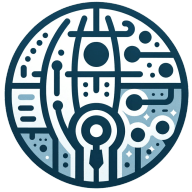6 Ways to Use Gamification to Make Employee Training More Engaging
Imagine boosting your team's productivity through a single tweak to your training methods. Revealed by a seasoned CEO and other esteemed professionals, these insights will transform your approach. The journey starts with enhancing engagement through gamified onboarding and culminates with personalized learning paths across six powerful insights. Learn directly from the experts themselves.
- Enhance Engagement with Gamified Onboarding
- Boost Morale with Badges and Points
- Simplify Learning with Microlearning and Challenges
- Motivate with Competitive Leaderboards
- Practice Skills with Interactive Scenarios
- Customize Training with Personalized Learning Paths
Enhance Engagement with Gamified Onboarding
In a recent employee training initiative at Software-House, I incorporated gamification to enhance engagement during our onboarding process for new hires. We designed an interactive training program that included elements such as leaderboards, badges, and challenge-based learning. New employees participated in a series of modules that covered company culture, tools, and best practices, with each module containing quizzes and challenges that rewarded them with points for completing tasks and engaging with the content.
We implemented a leaderboard to foster healthy competition, where employees could see their progress relative to their peers. Additionally, we introduced badges for achieving specific milestones, such as completing a module or demonstrating mastery of a particular tool. This not only motivated participants to engage more deeply with the material but also encouraged collaboration as they shared tips and strategies with each other.
The outcome was remarkable; we saw a 30% increase in completion rates for the training program compared to previous cohorts. Employees reported feeling more connected to their peers and the company culture, and many expressed that the gamified elements made the learning experience enjoyable and memorable. This approach not only enhanced retention of the material but also set a positive tone for their journey within the organization.
Boost Morale with Badges and Points
Rewarding progress and achievements with badges and points can make training more exciting for employees. These tokens serve as a tangible sign of their hard work and dedication. When employees see their progress being recognized, it can boost their motivation and morale.
This method also creates a sense of accomplishment and pride. Implementing this strategy can encourage more active participation. Consider incorporating badges and points into your training program today.
Simplify Learning with Microlearning and Challenges
Incorporating microlearning and challenges helps break down complex information into manageable parts. This method ensures that employees can easily digest and retain what they learn without feeling overwhelmed. Short, focused learning sessions can keep employees' attention and make learning more efficient.
Fun challenges add an element of excitement while solidifying knowledge. Integrating microlearning can lead to more successful training outcomes. Give microlearning a try to enhance your training sessions.
Motivate with Competitive Leaderboards
Using leaderboards can create a sense of friendly competition among employees. This motivates them to perform better as they strive to climb the rankings. Leaderboards can make learning more engaging by providing visible goals.
They also foster a sense of community as employees can see how they stack up against their peers. This method enhances both motivation and performance. Consider adding leaderboards to your training program today.
Practice Skills with Interactive Scenarios
Creating interactive scenarios lets employees practice new skills in a safe environment. This hands-on approach ensures that they can apply what they've learned in real-world situations. Interactive scenarios make learning more relevant and practical.
They also allow for immediate feedback, which can boost confidence and competency. This method transforms passive learning into active participation. Implement interactive scenarios to boost your training effectiveness.
Customize Training with Personalized Learning Paths
Offering personalized learning paths caters to the individual progress and needs of each employee. This customization ensures that employees receive the right level of challenge and support. It allows them to learn at their own pace and focus on areas where they need improvement.
Personalized learning paths make training more relevant and effective by addressing individual goals. This approach maximizes the impact of training on personal development. Start creating personalized learning paths for your training program today.


